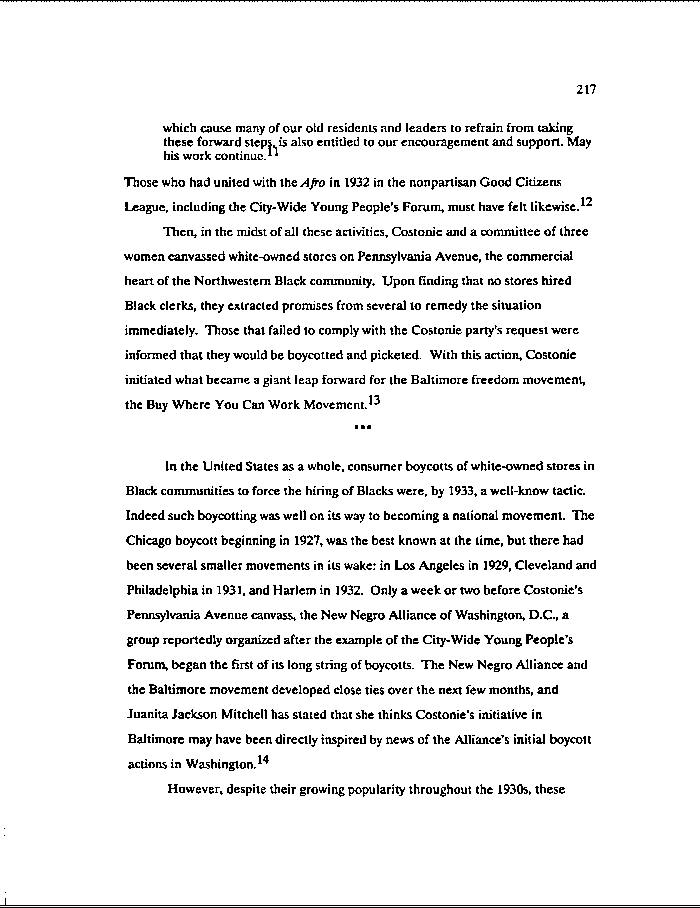|
217
which cause many of our old residents and leaders to refrain from taking
these forward steps, is also entitled to our encouragement and support. May
his work continue.
Those who had united with the Afro in 1932 in the nonpartisan Good Citizens
1?
League, including the City-Wide Young People's Forum, must have felt likewise.
Then, in the midst of all these activities, Costonie and a committee of three
women canvassed white-owned stores on Pennsylvania Avenue, the commercial
heart of the Northwestern Black community. Upon finding that no stores hired
Black clerks, they extracted promises from several to remedy the situation
immediately. Those that failed to comply with the Costonie party's request were
informed that they would be boycotted and picketed. With this action, Costonie
initiated what became a giant leap forward for the Baltimore freedom movement,
the Buy Where You Can Work Movement.13
In the United States as a whole, consumer boycotts of white-owned stores in
Black communities to force the hiring of Blacks were, by 1933, a well-know tactic.
Indeed such boycotting was well on its way to becoming a national movement. The
Chicago boycott beginning in 1927, was the best known at the time, but there had
been several smaller movements in its wake: in Los Angeles in 1929, Cleveland and
Philadelphia in 1931, and Harlem in 1932. Only a week or two before Costonie's
Pennsylvania Avenue canvass, the New Negro Alliance of Washington, D.C., a
group reportedly organized after the example of the City-Wide Young People's
Forum, began the first of its long string of boycotts. The New Negro Alliance and
the Baltimore movement developed close ties over the next few months, and
Juanita Jackson Mitchell has stated that she thinks Costonie's initiative in
Baltimore may have been directly inspired by news of the Alliance's initial boycott
actions in Washington.
However, despite their growing popularity throughout the 1930s, these
|

